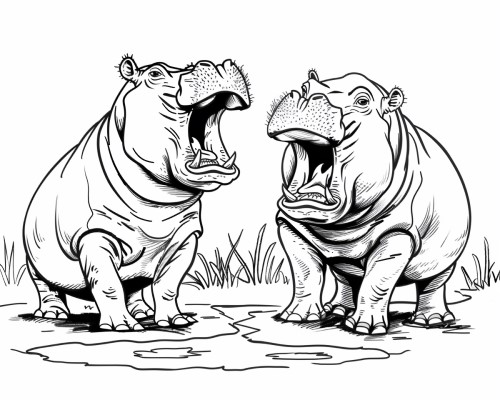Printable Coloring Pages
Hippopotamus Coloring Pages
Hippos are some of the most fascinating and unique creatures in the animal kingdom! With their massive bodies, powerful jaws, and distinctive grunts and snorts, hippos are favorites among animal lovers and safari-goers.
Hippos are native to Africa and spend much of their time in water, where they can cool off and protect themselves from predators. They are also incredibly strong and territorial, able to defend their territory with powerful charges and bites.
Realistic Hippo Coloring Pages
Hippos "yawn" not out of tiredness but as a display of aggression or to establish dominance. When a hippo opens its mouth wide, showing its large teeth and tusks, it's a warning sign to other hippos or potential threats in their territory. This behavior is a way for hippos to communicate their strength and assert their position within the group, especially in crowded or tense situations. It serves as a visual signal to deter confrontation or to intimidate rivals, helping to maintain the social hierarchy and reduce physical conflicts within the group.
Cute Hippo Coloring Pages
Hippo Coloring Pages for Adults
5 fun facts about hippos:
- Hippos spend most of their day in the water to keep their skin cool and moist. In fact, they can hold their breath for up to 5 minutes underwater!
- Hippos have big, wide mouths that can open up to 150 degrees. Their teeth can grow up to 50 centimeters (20 inches) long, which is about the size of a large banana!
- Hippos are really good swimmers, even though they're big and bulky. They can swim underwater by pushing off the bottom of the river or lake with their feet.
- Hippos are social animals and like to hang out in groups called pods. In a pod, there can be as many as 30 hippos, including babies and adults.
- Baby hippos are called calves, and they can weigh up to 50 kilograms (110 pounds) at birth! That's about as heavy as a large dog. Calves stay close to their mothers for the first 8 months of their lives.
































